With desktops relegated strictly to the workplace, nearly every other online activity is accomplished with ease on mobile devices
When the average American spends over five hours glued to their smartphone every day, you know that it’s become their primary “screen”. That’s 2.5x time spent on mobile than desktops per month. With desktops relegated strictly to the workplace, nearly every other online activity is accomplished with ease on mobile devices.
It all started innocuously enough, with mobile searches overtaking desktop searches on Google, way back in 2015. By October 2016, mobile traffic overtook desktop traffic worldwide for the first time ever with 51.3% of all traffic from mobile. That figure has been blown out of the water today, with a whopping 73% of online traffic now coming from mobile devices according to data collected from the Parse.ly network.
Obviously, where consumers flock, marketers follow.
Proof of mobile’s growing muscle is clear from Google’s revenues year on year. Mobile has led Google’s revenue growth for a while now, with revenues from their mobile advertising solutions growing 4x in the last 4 years.
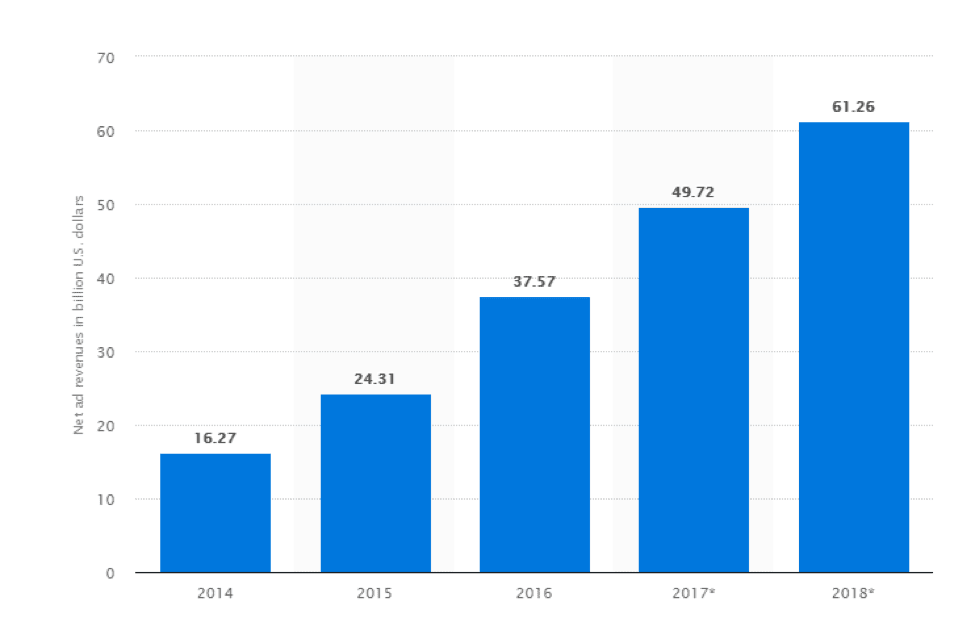
[Image via: statistica.com]
Why does this transition matter?
This transition to mobile means that marketers have gone from “optimizing for mobile” to developing dedicated mobile marketing strategies. Budgets for mobile marketing have gone from being an afterthought to dominating digital marketing plans.
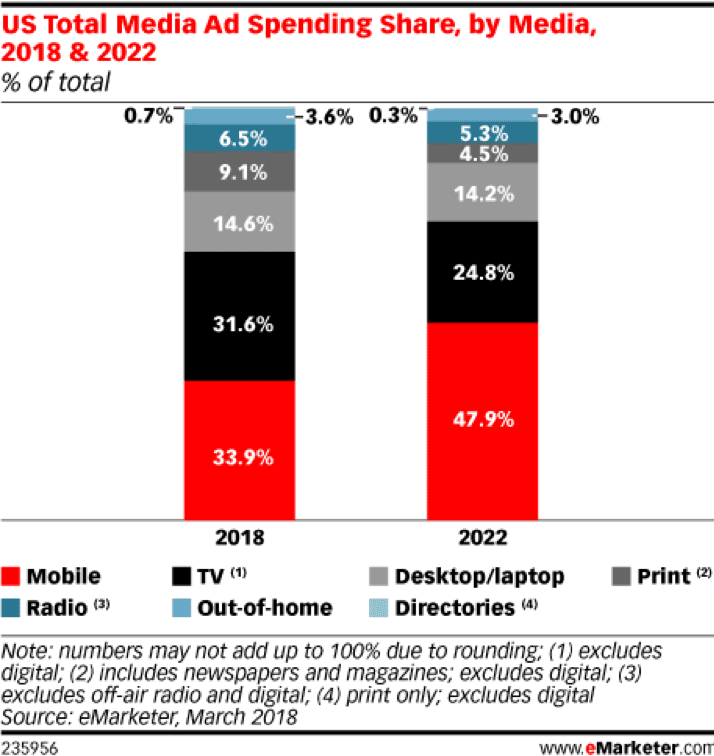
In 2018, mobile marketing budgets will account for 70% of all digital advertising and 34% of total marketing budgets. For the first time ever, television will bow down to mobile advertising with a lower share of budgets.
With a firm place in consumers’ pockets and a lion’s share of digital marketing budgets, mobile is rewriting many long-held marketing rules and assumptions.
Mobile users are no longer “skimmers”
Typical advice on optimizing a website or any online content for mobile used to start with the KISS rule – Keep It Simple, Silly! It was thought that mobile users had limited attention spans and would not bother reading long pieces of copy. Marketers were advised to keep their mobile content short and suitable for skimming, with large headlines that caught the eye and conveyed the whole message quickly.
But with the exponential growth in the amount of time users spend on their smartphones, better screen resolutions and faster broadband connectivity, we now see users spend more time reading in-depth pieces of content via their mobile. Pew Research shows that consumers spent twice the amount of time reading long-form content on mobile vs. short form content – 123 seconds vs. 57 seconds.
What’s more, the mobile user doesn’t just consume long-form content, they also engage more actively with websites than desktop users. Data shows that the average mobile user is 40% more engaged than their desktop counterpart. They’re also 20% more likely to click-through to articles than those on desktop.
What this means is, content marketers don’t need to worry about turning mobile visitors off when publishing long-form content. More long-form content will hopefully lead to better SEO, which will enable better conversions. Website content doesn’t have to be pared down for a “lighter: mobile experience. Publishers can opt for more long-form content and grow their advertising revenues.
Voice search grows at a mind-numbing pace
Voice search is a direct by-product of the growth in mobile device usage. Alexa, Google Assistant, Cortana have all rushed in an era of the virtual butler or voice assistant.
In 2016, Google’s CEO Sundar Pichai disclosed that 20% of all Google searches were voice searches. That was two years ago. Today, nine out of ten consumers use voice assistance on their smartphones. Some 88% of those who use a local voice search, look for driving directions right after.
Voice search may be awesome from the user’s perspective, but it adds yet another layer of optimization for marketers like you and me. With the near universal adoption of voice search, it is imperative to focus on natural language-based keywords, long tail keywords, metadata and structured data to keep optimizing your content for voice searches.
Data shows that 62% of smart speaker owners in the US have shopped online using their voice search assistant. As this behaviour spills over into smartphones and voice shopping on mobile devices takes off, monetizing voice assistants will be the next marketing frontier.
Mobile app market explodes, newer app types grow in popularity
The toss-up between mobile apps and the mobile web is now history. Mobile apps won hands down and the numbers speak for themselves. Now, 91% of smartphone users use mobile apps for navigating through everyday life.
Of these app users, 81% are the main shoppers in their household. So, cornering mobile app users’ attention is a guaranteed way of worming your way into the entire family’s shopping plans.
Mobile app usage has expanded from the traditional gaming, shopping, news and weather to more intricate lifestyle needs like:
- Family apps – 65% growth in searches for family and parenting apps
- Learning – 85% growth in language learning apps
- Fitness – 65% year on year growth in yoga and meditation apps
This expanded app universe not only offers marketers more ways to engage with their consumers, it also makes it easier to segment users and target those with niche preferences, enabling a more refined user experience and better conversions.
Millennials and Gen Z are mobile natives, not just digital natives
Pew Research reports that Millennials are all set to overtake the Boomers as the largest population group in the US in 2019. Following close behind is the Generation Z – teenagers between 13 and 17 years of age. Together, these two groups account for 153 million people or over 50% of the American population.
As digital natives, Millennials and Gen X have embraced mobile tighter than most other groups. Take Gen Z for example, smartphones are the number one screen that teens prefer over TV, gaming consoles, tablets and more. If mobiles are their device of choice, it follows then that mobile phones are also the preferred way to shop online for Gen Z, 53% vs. 36.5 % of Millennials.
When over half the population is heading in a certain direction, it automatically steers overall strategies for brands in that direction too. Brands targeted at teens and young adults need to prioritize mobile in their marketing plans.
From pushing hyper-relevant, location-specific offers straight to their mobile devices, to using preferred channels like mobile video to communicate to them every marketing move will now be mobile-centric.
What you can do about all this as a marketer
Consumers are going mobile-first? Obviously, your brand needs to follow suit. Note, how I did not say you need to “optimize for mobile”. Those sunny days of being satisfied with just a “mobile-optimized” site are long gone. Today, your website, your content, indeed your entire marketing strategy is unfailingly either mobile-first or DOA. Your choice.
Things like responsive design, mobile friendly layouts, quick checkouts are all par for the course. They’ll no longer give you an edge over the competition. They’ll merely keep you in the race. So what will help you pull ahead? Here are some thoughts.
Embrace AMP for top pages
Even though AMP is not officially a ranking signal for Google (at least not yet), Google explicitly pushes for all websites to adopt the AMP standard to speed up the mobile search experience.
AMP-enabled pages are ranked higher and also carry a little “lightning bolt” icon to tell the user that they can expect a much faster experience from the AMP page. So AMP >> better rankings >> more clicks >> more conversions!
If your site is on WordPress, AMP is easy to adopt. Simply download an AMP plugin like AMP for WP and you’re good to go, with control over all sections of your site, native ad slots and a page builder that helps you build pages without touching the code.
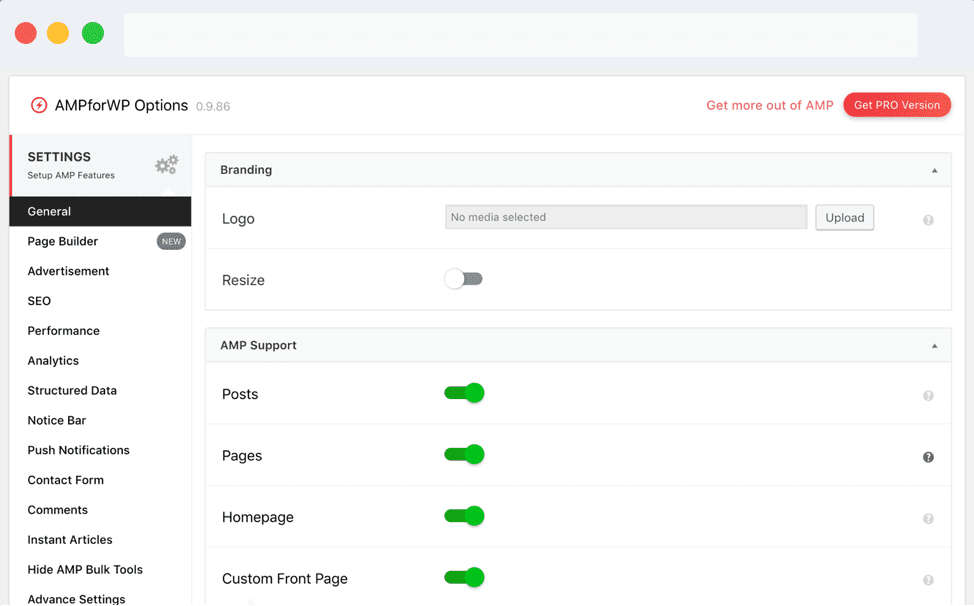
Easy though it may be, blindly relying on a plugin for your website’s AMP is a bad idea. Typical AMP plugins will create a “webpage lite” version of your original pages in the AMP format, with only the bare essentials active on the page to help it perform better. This makes AMP pages look visually very different from your regular pages.
However, this practice of launching a pared down page in place of a truly mobile ready page will now be penalized by Google. In November 2017, Google announced that they would exclude AMP pages from the carousel if these pages look substantially different from their responsive counterparts.
The solution? Code your AMP pages from scratch and build them to look as much like the originals as possible. Stone Temple Consulting shared on Moz how travel site Thrillist saw a 70% lift in organic search traffic after converting 90% of their pages to AMP.
In another instance, a Bangalore-based real estate platform NoBroker.in implemented a full-fledged AMP project on their website and were rewarded with 18% drop in bounce rates, 25% growth in registrations and an impressive 77% increase in the number of connections between renters and tenants.
Personalize the mobile experience
Your smartphone has more personal information about you than probably all our other devices combined. Thanks to this wealth of data, no other device lends itself to hyper-personalized, relevant and actionable messaging as mobile.
From personalized product recommendations on e-commerce sites to creating segments of one in your email campaign with hyper-targeted content to offering users personalized journeys on your website, the possibilities with personalization on mobile are endless.
You don’t need me to extoll the virtues of personalization. Salesforce found that 52% of consumers will switch brands if they don’t receive personalized communications from a brand. On the flipside, 44% of users would become repeat buyers after experiencing a personalized shopping experience.
In the screenshot below, a restaurant picks up on time of day and offers custom content to users in the form of a personalized lunch menu.
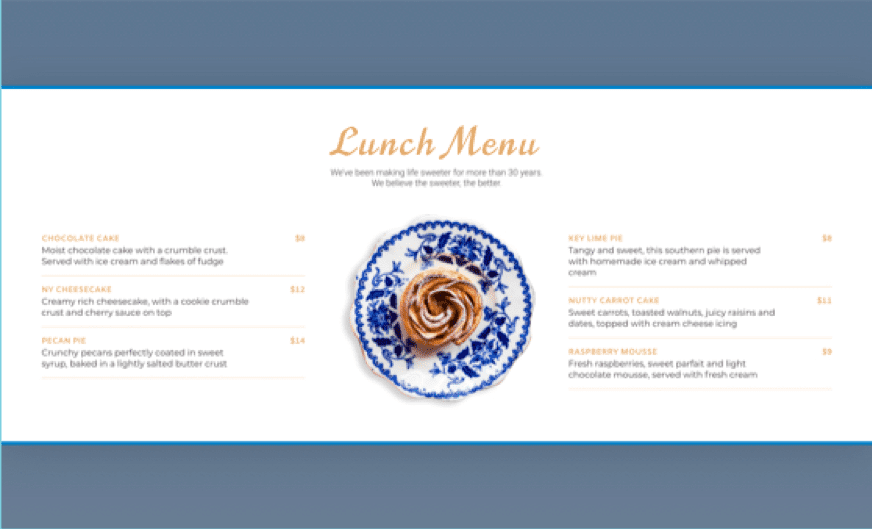
The example below shows another clever use of personalization in this company’s CTA. The site leverages mobile traffic by offering a quick click to call option with their CTA button. But what’s the point of having people call you after hours? For such times, the site changes its content and switches its CTA dynamically into a contact form that users can fill out to get a call back the next working day.
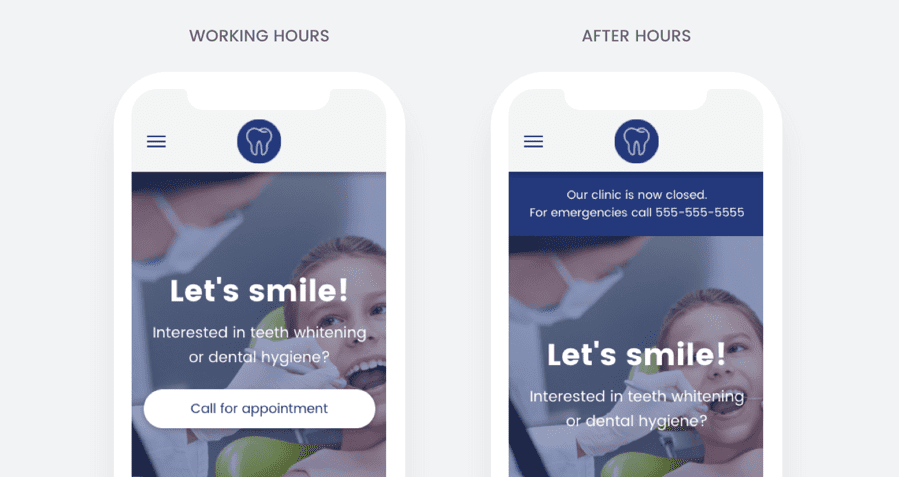
Mobile landing pages are frequently neglected (or not accorded the same importance as desktop) when it comes to optimizing for conversions, probably due to less leeway in experimentation or A/B testing.
Once you get the gist of how your mobile website influences the typical customer journey, you can implement trigger-based personalization using a mobile web builder such as Duda. Based on the location, time, number of visits, or campaign URLs that drive your mobile visitors, you can customize their experience using small scripts or special promotion displays and nudge them towards predefined actions.
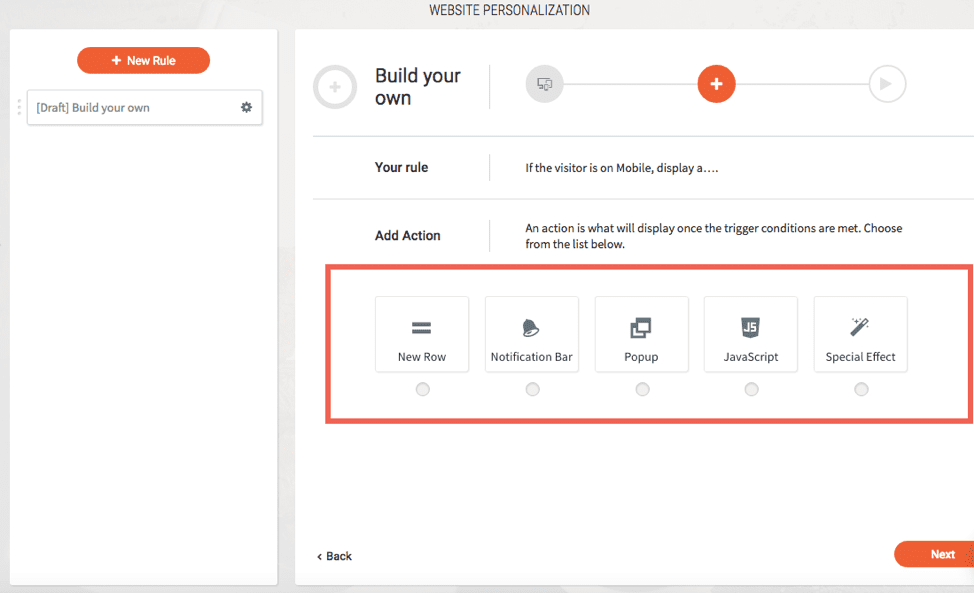
Make your mobile ads work harder
We saw earlier how mobile advertising has come to dominate digital advertising. One of the most basic forms of mobile advertising would be the humble search ad. With the volume of mobile searches zooming past desktop searches, this ad format remains as critical as ever for mobile advertisers.
Search ads are not all about keyword optimization, quality scores or ad ranks. There’s a lot more that you can leverage to get more bang for your buck. Search ad extensions are one such feature that too many advertisers overlook or underuse.
The basic site links are great and easy enough to implement, but with a mobile audience, you want to make sure you implement your call extensions and even your message extensions to maximize conversions.
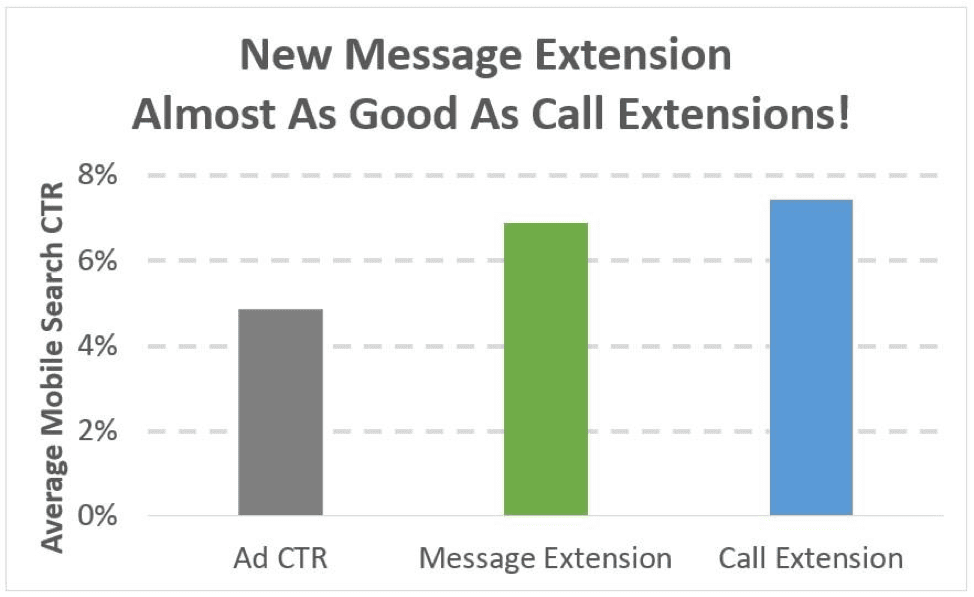
[Image via: wordstream.com]
Follow your user wherever they go with geographical targeting on mobile ads. Google’s data shows that within a one-mile radius of a store, click-through rates increase by 28% and the store-visit rates increase by 57%.

The relevance and customer delight of reaching out to your user right when they can take action is worth the extra time and effort you’ll spend setting these up.
Implement cross-device tracking on Google Analytics
It’s not enough to market to your users on mobile. You also need to know if your efforts are paying off across all devices.
We’ve seen how users can be tracked across devices via a roundabout route with UserID on Google Analytics in the past. For this to work, users had to log into to your site from one device, get “cookied”, log in again from another device and then get tracked across multiple devices.
With Google’s recent launch of the Cross Device tracking option on Google Analytics, users now only need to be signed into their Google accounts and have ad personalization activated to allow you to track them seamlessly across devices.
![]()
Are you mobile-ready yet?
The transfer of power from desktop to mobile has been in the works for so long that marketers have almost developed a blind spot for it. Website designers still design elaborate desktop sites and then hack them down to create their mobile versions. Ditto with landing pages, email and content assets like case studies and white papers in PDF format. Even video! Big mistake.
Now’s the time to make the switch in our collective marketing mindsets. It’s time to now think, “How do I take this awesome mobile ad and adapt it for boring old desktop users?” instead of the other way around. The clock is ticking. Are you ready yet?
